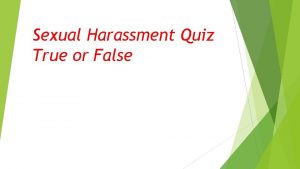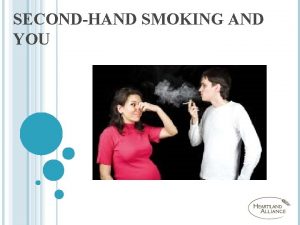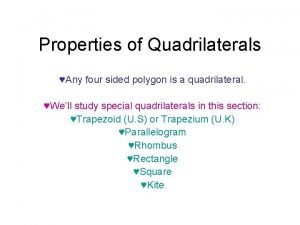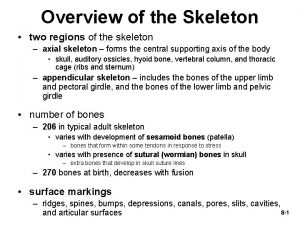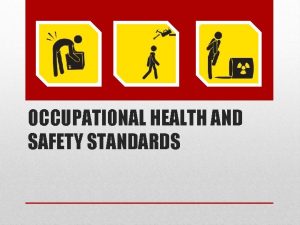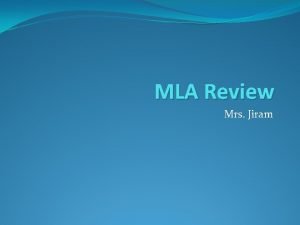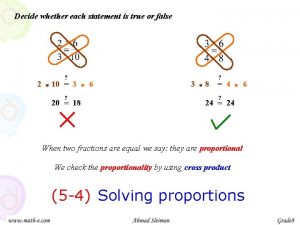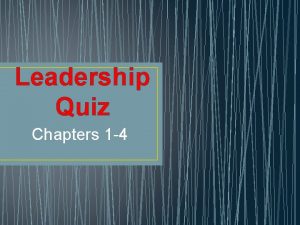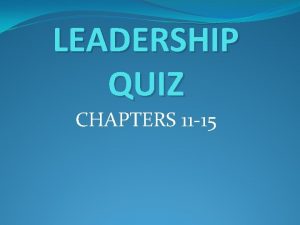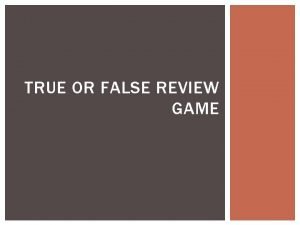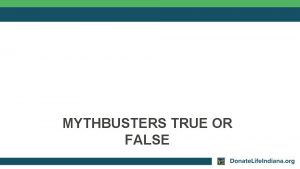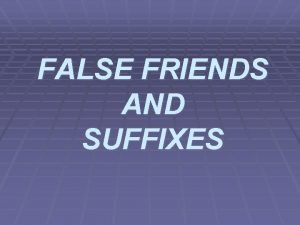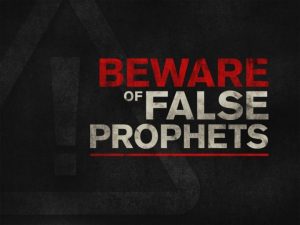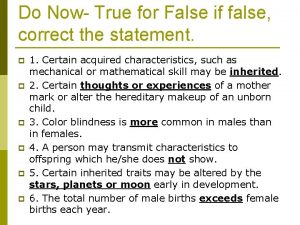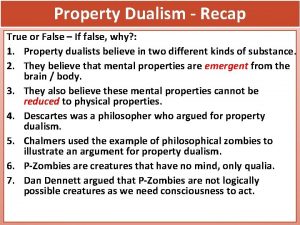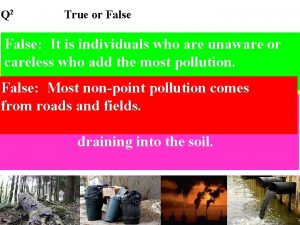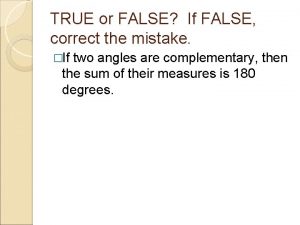LEADERSHIP QUIZ CHAPTERS 7 10 True or False





















- Slides: 21

LEADERSHIP QUIZ CHAPTERS 7 -10

True or False? � 1 - Communication consists of only a verbal process between two people.

True or False? � 2 - “I messages” lie at the heart of aggressive communication and seek to accuse, control, and attack others.

True or False? � 3 - Your physical appearance is one of the ways we communicate with others nonverbally.

True or False? � 4 - Women have traditionally experienced the same level of professional success as men if they are competent and qualified.

True or False? � 5 -Dominant diversity groups generally are not willing to welcome less dominant groups into the melting pot.

True or False? � 6 -The last step of the decision making process is to follow up and evaluate the results.

True or False? � 7 - As a leader, avoid seeking advice and obtaining opinions from others as this shows a lack of management ability and will reduce the confidence other people will have in you.

True or False? � 8 - When you are examining the pros and cons of each proposed alternative that you are considering in a decision making process, you are using a “cost-benefit analysis. ”

True or False? � 9 - Conflict can be an asset or a liability.

True or False? � 10 - Conflict that is a positive influence and serves the interest of the organization is called “dysfunctional conflict. ”

Multiple Choice � 11 - When you are empathetically listening and understanding another person’s point of view without having to change it, you are using A. Passive/aggressive communication B. “You messages” C. Validation D. Non-verbal communication

Multiple Choice � 12 - Research indicates that _____ percent of our communication comes through the non-verbal channels of communication. A. 20 -30 B. 40 -50 C. 55 -70 D. 75 -90

Multiple Choice � 13 - Affirmative Action was introduced in 1961 A. Because of the legislative amendment proposed by Dr. Martin Luther King, Jr. B. Because the Hispanic population was increasing at the same rate as the African American population in the United States C. To ensure job and university applicants were treated equally D. To ensure the Bakke case against the University of California was implemented throughout the entire higher educational system.

Multiple Choice � 14 - The belief that certain groups are inherently superior to others is called A. Ethnic advantage B. The glass ceiling C. Racism D. assimilation

Multiple Choice � 15 - A traditional non-diverse corporate culture that prevents promotions and leadership opportunities for minorities and creates barriers can be referred to as A. Glass ceilings B. Walls C. Escalators D. All of the above

Multiple Choice � 16 - The most popular decision making approach used is A. Using intuition B. Going by hunches C. Experience D. Using a decision tree in a graphic visual form

Multiple Choice � 17 - The first step in decision making is A. Generating alternatives B. Selecting a solution C. Identifying and defining the specific problem D. Evaluating results.

Multiple Choice � 18 - The most common cause of conflict within an organization is A. Unclear objectives B. Incompatibility C. Vague performance measures D. Ill-defined decision making processes

Multiple Choice � 19 - When a person is using a problemsolving process in handling conflict, he or she is using the conflict style of A. Avoiding B. Collaborating C. Compromising D. accommodating.

Multiple Choice � 20 - Which of the following are not one of the five conflict strategies? A. Competing B. Avoiding C. Collaborating D. Arbitrating E. Compromising
 Amer rasheed
Amer rasheed True or false questions about leadership
True or false questions about leadership Belong images
Belong images Road safety true or false quiz
Road safety true or false quiz Sexual harassment quiz
Sexual harassment quiz Accounting chapter 14 test
Accounting chapter 14 test Groundwater true/false quiz answers
Groundwater true/false quiz answers Smoking quiz true or false
Smoking quiz true or false True or false =
True or false = Sound waves are electromagnetic waves. true false
Sound waves are electromagnetic waves. true false Which of these statements is true?
Which of these statements is true? False and true vocal cords
False and true vocal cords There are two seasons in a year true or false
There are two seasons in a year true or false All rectangles are squares
All rectangles are squares Percent increase and decrease maze answer key
Percent increase and decrease maze answer key Lumbat
Lumbat Take away any liquid near your working area
Take away any liquid near your working area Mla works cited indentation
Mla works cited indentation Logical operators truth table
Logical operators truth table Does heat radiation travel in straight lines
Does heat radiation travel in straight lines Identify each statement as either true or false
Identify each statement as either true or false Decide whether each statement
Decide whether each statement




